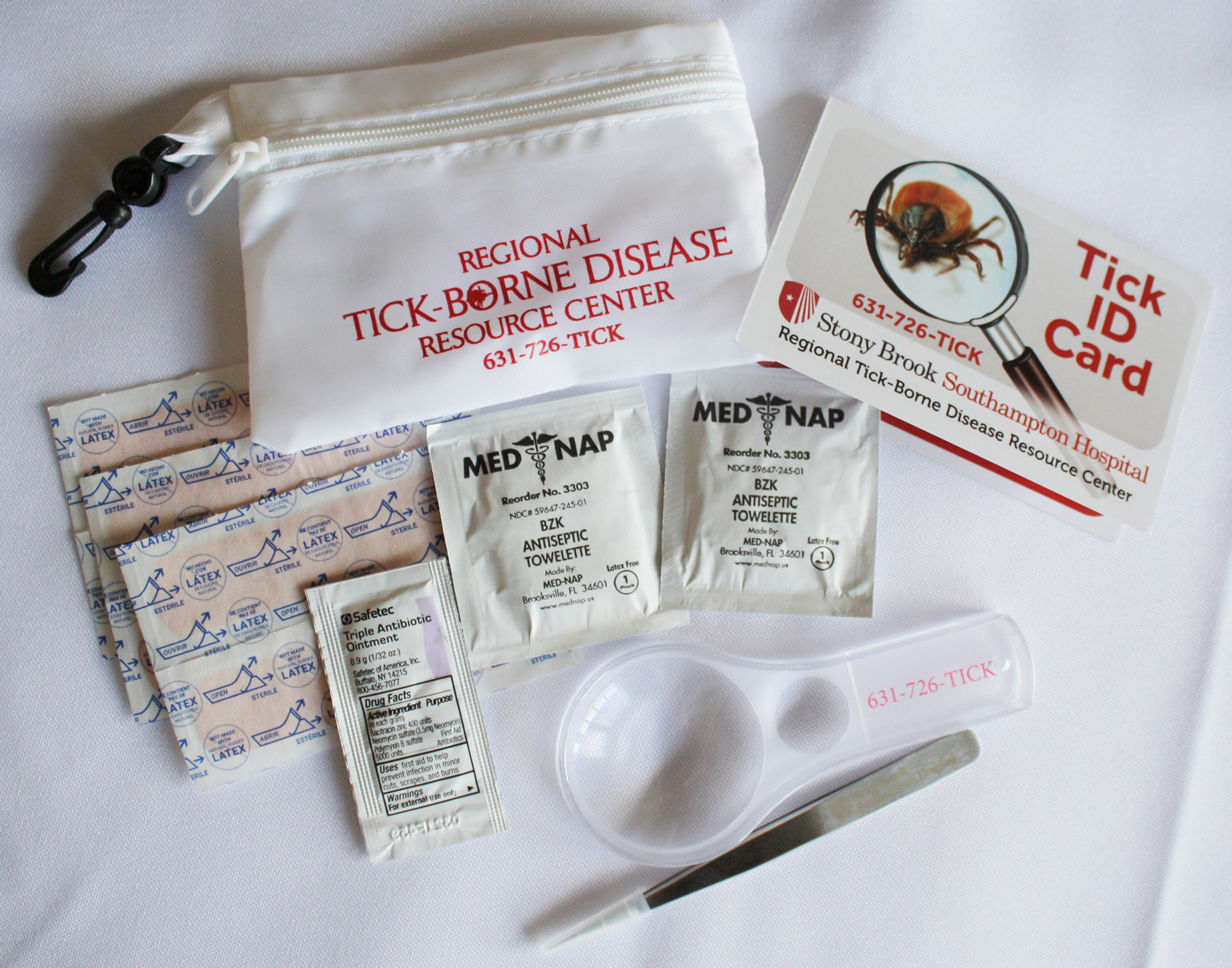Lyme Disease, COVID-19 Symptoms Similar


A friendly reminder to those who are going stir-crazy self-isolating during the COVID-19 pandemic and going for walks, runs, and bike rides: it was a mild winter, which leads to the early emergence of ticks looking for their first meal since fall. What compounds the problem, especially approaching national Lyme Disease Awareness Month in May, is that the novel coronavirus and the tick-borne illness result in similar flu-like symptoms.
“That’s adding another dimension to this whole thing,” said Brian Kelly, owner of East End Tick & Mosquito Control. “People think, do I have COVID-19? Do I have Lyme disease? That will be another problem for the doctors to figure out. People need to remember to do tick checks and to use a tick repellent. You need to be vigilant about it.”
Most people who contract a tick-borne disease do so in May because nymph deer ticks are out.
“They’re really, really small. They’re hard to see, and people don’t even know they’ve even been bitten,” Kelly said. “And ticks are being found everywhere right now — they’re not practicing social distancing.”
There was no winter overkill due to the warmer-than-usual season. This means a tick-abundant forecast is imminent.
To protect against these insects, since they’re found low down on the body, spraying clothes and body from the waist down, including your shoes, with a tick repellant is a good place to start. Tucking pants into socks also helps.
“They don’t jump out of trees. They don’t fly. They don’t hop. They crawl very slow and they always crawl up,” Kelly said. “We find ticks like to bite places where there are creases, so under your armpits, your crotch, your belly button, behind your ear — ticks tend to prefer those spots, but I’ve also had one in the middle of my back, so it’s important to check everywhere.”
They’re found in beach grass near local waters, including Long Beach in Sag Harbor, in the large swath of grass between the parking lot and the sand, which Kelly calls a “major tick-collector,” and dune crossovers near the ocean.
Deer ticks, dog ticks, and Lonestar ticks are all out right now. Deer ticks, from which a person can contract Lyme disease, are usually found along the perimeter of a yard and in shrub beds. They’ll climb up sticks or leaves of grass and wait for something to pass by. Lonestar ticks may be found in the middle of the yard and labelled more aggressive because they come crawling, fairly fast, toward their meal. Kelly said the insects are attracted to the carbon dioxide bodies emit.
“The lone stars are hardier than the deer ticks,” Stony Brook Southampton Hospital Administrative Director of Regional Tick-Borne Disease Resource Center, Karen Wulffraat. “They hang out in the same places as deer ticks, but they can also withstand heat and less humidity better — so you might find them in the grass in the, or on your deck, but you will definitely also find them in the same places as deer ticks.”

Other ways to defend against ticks include spraying property monthly from April through October, putting a fence around a yard to keep deer and other animals out, keeping pets within property boundaries, educating children about the dangers of going into the woods, keeping the grass cut short, eliminating tick habitat by raking and removing leaves that have blown into the yard edges and under shady vegetation, and even throwing clothes into the dryer for at least 15 minutes after coming in from outdoors.
If bitten, a tick usually remains on a body anywhere from 24 to 36 hours. The removal of a tick is crucial, and determines whether you get sick or not. Always use a pair of tweezers and grab a tick by its head, pulling straight up. The bug will pull a little by doing this, but never squeeze its body because it can regurgitate organisms.
There’s no need to run to the doctor, especially because an infection won’t show on a test for four to six weeks, which is when a person develops antibodies, but a bullseye rash is also a common sign of being bitten by a deer tick. Identifying which type of tick you were bit by will determine a course of action. You can keep it in a plastic bag and bring it to your doctor. Also, be sure to clean the bitten area with soap and water after tick removal.
Stony Brook Southampton Hospital nurse Rebecca Young, RN, BSN monitors the hospital’s Regional Tick-Borne Disease Resource Center hotline — 631-726-TICK (8425) — which also provides identification cards with free tick removal kits. Young said she’s already been receiving phone calls, but added there haven’t been any cases of someone with both Lyme and COVID-19 just yet. It’s still a little too early to tell what the result of that might be.
“The last thing we want is a coinfection, but we haven’t seen one yet,” Young said. “Usually with coinfection you’re sicker, but if you have flu-like symptoms with a fever right now you’ll definitely be taking a COVID-19 test first.”
COVID-19 tests can be done immediately utilizing PCR — polymerase chain reaction, which is the most sensitive of the rapid methods to detect microbial pathogens.
“The calls are starting to come — people have been bitten especially in the past week — but everything is really COVID-19-focused right now,” Young said. “Some are trying to determine the difference between the symptoms of each just to be sure.”
Young also warned the issue could come up again in the fall, when the novel coronavirus may make a second appearance. Ticks will still be prevalent at that time. Determining the results of a potential coinfection and monitoring the differences between each illness now will help the hospital be prepared later.
While the medical center is not currently conducting educational outreach due to COVID-19, additional information and informative videos can be found at www.southampton.stonybrookmedicine.edu/services/tick-borne-disease-resource-center.
desiree@indyeastend.com




